I enjoy fishing creeks because they’re easy on anglers. When creek fishing, there’s typically less of a need for analytical thinking and technically-perfect drifts. The tradeoff, of course, is that the trout in most creeks aren’t all that big.
Some anglers will wax poetic about the intimate setting of small waters, of the primal connection between angler and trout, and the art of stalking small fish, almost as if they have to justify intentionally chasing small fish. All of those creek-fishing defenses are valid, but if I’m being honest, I enjoy fishing creeks because they quickly — and consistently — reward a well-placed fly. It’s simple, easy fishing that doesn’t demand multiple drifts, fly changes, and re-rigging to catch trout. There’s nothing to justify about that kind of fishing. If anything, it’s fishing like it was “back in the good ol’ days.”
The creeks I fish are smaller high-mountain streams that vein the landscape here in Wyoming. But the experience has much in kind with fishing trout creeks elsewhere — the countless rainforest creeks of the Pacific Northwest, the diminutive rhododendron-lined creeks of the Appalachians, and so on — water that’s 15-30 feet wide on average, cascading through steep terrain, or winding through high-country meadows. A good fish in many of these creeks is 15 inches, but most run around 10. It’s the perfect kind of water for fishing bamboo (I build my own rods), or the increasingly-popular fiberglass rods.
Folks tend to overthink their approach to these creeks. I grew up fishing water like this back in Utah, and while the landscape is different here in northern Wyoming, I use mostly the same rigs and flies. This kind of fishing is simple, and while you can vary your fly choices to fit local hatches, I think the rigs I use should work almost anywhere.
Dry-dropper-dropper
Where it works best
Bigger, faster sections of creeks that are mid-thigh deep, or deeper. Also wonderful for pocket water.
More Like This
I’ve written about my preferred three-fly rig before, and it’s still something I use on many creeks. Where regulations allow for it, fishing three flies lets you cover most of the water column, thereby increasing your chances of hooking up.
I use this rig primarily in pocket water, or on the larger stretches of creeks that have ample casting room. It also works well in quicker riffles, but you need to watch their depth to avoid catching bottom on every drift.
A creek like this, for example, is a great place to fish three flies. It’s rarely more than waist-deep, but even in its shallower stretches, it’s quick enough that three flies rarely get hung up on the bottom.
Flies I Use
I have a slim quiver of patterns, but I tie them with quite a bit of variety. For example, I’ll tie my Hare’s Ears with different colored beads, ribbing, and dubbing in the thorax. It keeps my tying simplified, but still gives me options for those days when the fish seem to key in on a certain color.
With that said, I rarely vary outside of these flies for use in my dry-dropper-dropper rigs:
- Parachute Adams
- Elk hair caddis
- Elk hair stimulator
- Hare’s Ear
- Frenchie
- Perdigon
- Zebra midge
- San Juan worm
Obviously, you can switch some of those patterns out to match local hatches.
How to rig it
I go through the dry-dropper-dropper rig in detail in this story, so I’ll try to be brief here.
I use a clinch knot to attach tippet to the bend of a hook and I like about 15 inches between my flies. Any shorter than that and your chances for tangles increases exponentially. I rarely use split shot with this rig, opting instead to tie my flies with tungsten beads.
Dry-Dropper
Where it works best
Pocket water, pools, riffles — essentially, all the water in a creek that’s deep enough for nymphing.
The dry-dropper is the OG of creek rigs. It’s effective, easy to set up, and versatile enough to work in just about any type of water you’ll encounter in a creek. I prefer to fish two droppers, as I discussed earlier, because I can cover more of the water column. But if you’ve never fished a dry-dropper before, I recommend starting with this rig before moving onto three flies.
The dry-dropper is easy to adjust for deeper or shallower runs, and it’s easy to switch out the bottom fly if the fish aren’t enjoying it. That’s the main advantage the dry-dropper has over a three-fly rig: it’s quicker to set up and adjust.
Flies I Use: I tend to use larger nymphs with this rig than I do with the dry-dropper-dropper. A single dry can support a heavier nymph on its own. Adding a second nymph below that is asking too much of most dry flies.
If the fish are keyed in on stonefly nymphs, or just want a larger attractor nymph, I’ll usually fish the dry-dropper rig instead of using three flies.
- Elk hair caddis
- Elk hair stimulator
- North Fork Special
- Perdigon
- Pat’s Rubberlegs
- Cranefly nymph
- Mop fly
How to rig it
I use the same knots and length of tippet for a dry-dropper as I do for a three-fly rig. Keep it simple, and don’t go too thin on your dropper tippet, to help avoid tangles.
Double-Dry
Where it works best
Flat meadow sections, riffles during hatches, or on big pools
A double-dry fly rig is often underutilized, in my experience, especially if that second dry is an emerger or soft hackle. Yes, I know those aren’t technically dry flies, but they’re not nymphs, either.
I really like the double dry rig on flat, slow, and clear water. These are the spots where creek fish can act as discerning and picky as their tailwater compatriots, so a good presentation is paramount for success. I’ve found that on creeks, more so than on larger streams and rivers, trout will spook if you toss a dry-dropper rig through water like you see in the picture below.

Using the double dry lets you give the fish more than one option, without potentially spooking them like you can with a dry-dropper.
Flies I Use:
I’m a big fan of parachute-style emergers, and they work really well on creeks. The way these flies sit in the surface film seems to spark an immediate reaction from trout.
These are the flies I most commonly reach for when fishing two dries:
- Parachute Adams
- Elk hair caddis
- Sparkle dun
- Last Chance cripple
- Barr’s emerger
- Griffiths gnat
- PMD spent-wing
- Parachute quill-bodied BWO emerger
How to rig it
The double dry rig is simple. I tie about two feet of tippet off the bend of the first fly hook, then attach the second fly to that piece of tippet. I’ve found two feet is a good distance to avoid tangles and allow both flies to maintain a lifelike drift.
Wrapping Up
I’ve found success with these three rigs on creeks all over Utah, Idaho, Wyoming, Montana, Colorado, and even Alaska. Aside from making changes for local hatches, I keep my fly selection limited to mostly what I discussed above.
If you’re just starting out with creek fishing, I’d recommend fishing a dry-dropper. You’ll get the most out of your creek experience if you cover two portions of the water column.
By no means is this meant to be an indictment on any other rigs or tactics for creek fishing. I’m speaking from experience for what’s worked for myself and my guiding clients. If you spend time on small water this summer, try one of these rigs out, and let me know how you do.




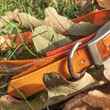
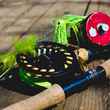
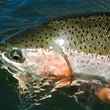




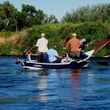









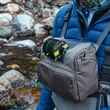
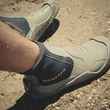



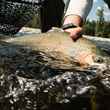
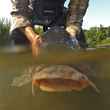



Comments
Rob Viehman replied on Permalink
All great info. For those of us who like to fish barbless, use a triple surgeon’s knot and fish a dry/dropper rig off the tags, leaving one short (six inches or so) for the top fly and a longer tag (18 to 24 inches) for the nymph. You will also find your top fly won’t drop down in the water from the weight on the hook and will drift better. Fish on!
pat tinch replied on Permalink
Fishing tandem rigs is bad enough but THREE flies!
That's not fly fishing and you know it.
That's dredging. That's bait fishing with flys. Some sport you have going there!
I would rather use salmon eggs but then again that's probably one of your "droppers"
Anyone fishing this way should be embarrassed and ashamed.
jon replied on Permalink
A good tip I learned from a guide was if you are fishing dry-dropper and hit a pool where you need to go deeper, just add the 2nd dropper with a little weight to the mix....when you get back shallower, cut it off....this saves a lot of re-rigging.
Mike replied on Permalink
No mention of two or more wet fly rigs or bucktail on the point, wet fly/ nymph on a dropper rigs etc. These are very effective and have caught me thousands of trout over my 50 +
years fly fishing! Do not ignore what has been proven very effective over centuries of fly fishing!
Pages